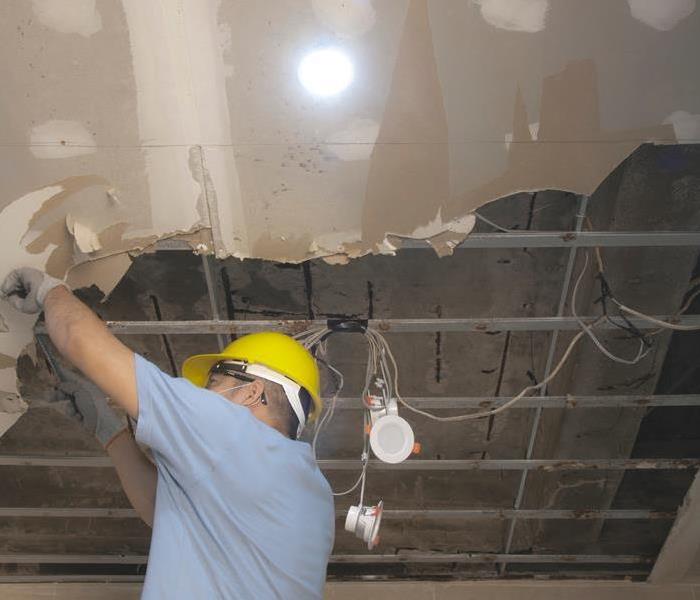Navigating Water: Tackling Common Challenges in Commercial Buildings
7/18/2023 (Permalink)
Water is a crucial resource in any commercial building, serving various purposes such as drinking, sanitation, heating, cooling, and irrigation. However, the efficient management of water in commercial buildings can be challenging, leading to several common water issues. These issues can disrupt daily operations, compromise water quality, and result in unnecessary expenses. In this blog, we will explore some of the most prevalent water issues faced by commercial buildings, their causes, and potential solutions.
Leaks and Plumbing Problems
Leaky pipes, faucets, and toilets are common issues that waste significant amounts of water and can lead to structural damage. Faulty plumbing systems, high water pressure, or corrosion can contribute to these leaks. Routine inspection and maintenance of plumbing systems are crucial to detect and address leaks promptly. Implementing water-efficient fixtures and employing professional plumbers for regular maintenance can significantly reduce the occurrence of such issues.
Low Water Pressure
Insufficient water pressure can cause inconveniences such as weak water flow, slow filling of tanks, and ineffective water-based equipment. Common causes of low water pressure in commercial buildings include inadequate pipe sizing, sediment buildup, clogs, or issues with the municipal water supply. To resolve low water pressure, it is important to identify the root cause. Regular cleaning of water storage tanks, installation of pressure-boosting systems, and periodic checks on the plumbing infrastructure can help alleviate this issue.
Water Contamination
Water contamination poses a series of risk of occupants in commercial buildings. Contaminants such as bacteria, chemicals, heavy metals, or pollutants can enter the water supply through various sources. Aging infrastructure, backflow incidents, improper maintenance, or poor water treatment practices can contribute to water contamination. Regular testing of water quality, installation of effective filtration systems, and adherence to proper maintenance protocols can help mitigate contamination risks.
Water Waste and High Consumption
Commercial buildings often experience excessive water waste and consumption due to inefficient practices and outdated infrastructure. Common culprits include over-irrigation, inefficient cooling towers, leaks, and unrestricted water use. Implementing water-saving measures such as low-flow fixtures, smart irrigation systems, and regular leak detection programs can significantly reduce water waste and consumption. Awareness campaigns and employee education on water conservation can also contribute to more responsible water usage.
Inadequate Hot Water Supply
Insufficient or inconsistent hot water supply can be a major inconvenience in commercial buildings, especially in settings that rely heavily on hot water for daily operations such as restaurants, hotels, and hospitals. Inadequate water heater capacity, equipment malfunction, sediment buildup, or piping issues can cause such problems. Regular maintenance of water heaters, proper sizing of equipment, and periodic flushing of tanks can help ensure a consistent and reliable hot water supply.
Efficient water management in commercial buildings is crucial for sustainable operations, cost savings, and maintaining a safe and healthy environment. By addressing common water issues such as leaks, low water pressure, contamination, waste, and inadequate hot water supply, building owners and managers can significantly reduce water-related problems. Regular maintenance, implementation of water-saving technologies, and raising awareness among occupants can pave the way towards a more sustainable and responsible use of water resources in commercial buildings.



 24/7 Emergency Service
24/7 Emergency Service
